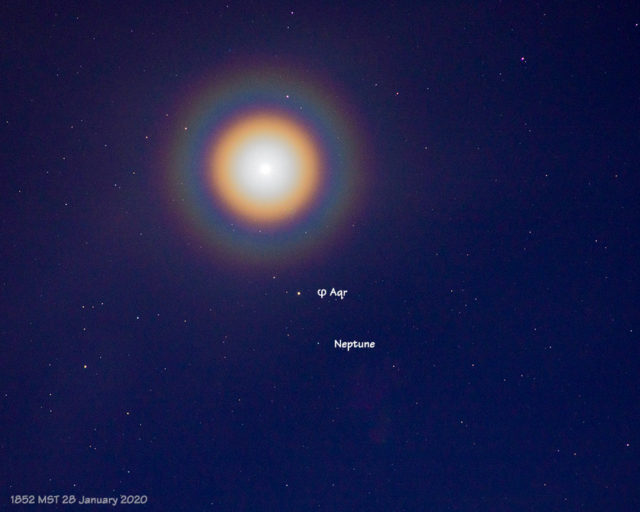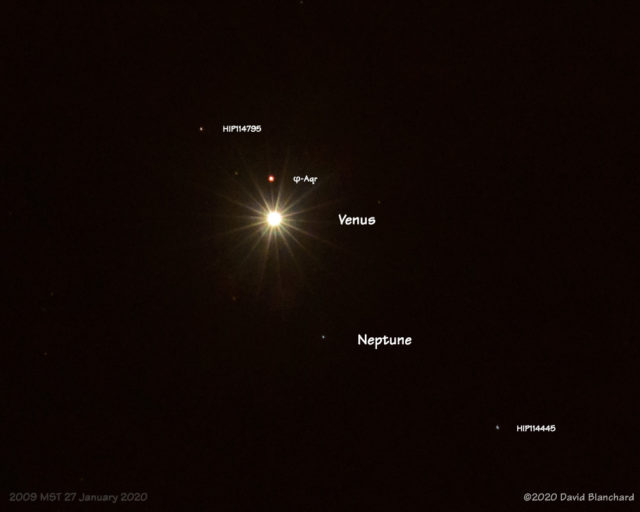In late January, the easily visible planet Venus was located in the same part of the evening sky as the dimmer and distant planet Neptune. I’ve never tried to photograph Neptune but this pairing of the planets was a good reason to do so.

The first attempt was taken on the evening of 27 January (shown below) and I was limited to very short exposures as I was using a standard tripod. The second attempt was the following night from a better location and, more importantly, I was using my equatorial mount star tracker so that I could follow the stars (or planets) for longer exposures.
The image at the top is the second attempt. High, thin cirrus clouds were beginning to move in from the west and I was hoping that the clouds might make some of the stars more colorful. What I got was an amazing corona surrounding the very bright planet Venus while stars and the dimmer Neptune appeared relatively unchanged.

The image above is from the first night of shooting and shows diffraction spikes around Venus. Examing these two images you can easily see how far Venus has moved in one night by comparing the position of Phi Aquarii.